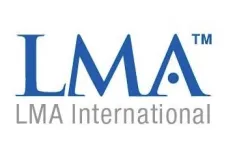Syringe testing to ISO 11040-4 Annex G6 needle shield pull-off force


Solution
- Universal tensile and compression testing machine with software control
- Special fixtures to locate and load a selection of syringe barrels
- Automated system to test a batch of 12 with screw-tip caps
Benefits
- Flexible and efficient equipment to repeatedly test to the relevant standards
- Upgradable accessories to extend the test capabilities
Requirement
The ubiquitous medical syringe is an extremely important device, delivering (parenteral) injectable products to the patient by means of a cylinder and plunger mechanism. To ensure safe use of an injectable medication, prefilled syringes for single use were developed to avoid the need to transfer the product from its supplied container into a hypodermic re-fillable syringe—a time-consuming process with potential for contamination.
The medical devices and pharmaceuticals sector is highly regulated, driven by compliance and auditing processes and all syringes need to perform precisely to specification.
Our customer required a test system to meet ISO11040-4 (Glass barrels for injectables and sterilised sub-assembled syringes ready for filling). Annex G covers Test methods for closure systems, and G6 Method 1 specifies pull-off force of the tip cap or the needle shield.
Solution
Mecmesin supplied a software-controlled universal tensile and compression testing machine with appropriate loadcell capacity, crosshead speed control and data sampling rate, as indicated by the test standard. The customer provided a selection of syringe specimens, and our Special Applications team manufactured the fixtures to perform the pull-off test; a dual-action parallel jawed grip with serrated faces and syringe barrel holder. Interchangeable components enabled the customer to test various syringe configurations and also run other tests referenced in the standard.
The software controlled the pulling of the cap, gripped in the vice clamp, and captured the peak force as the closure is removed from the syringe tip. An appropriate threshold value may be used to immediately indicate a pass or fail result. VectorPro software complies with FDA 21 CFR Part 11 guidance to make this solution complete of the medical devices sector.
A fully automated batch tester was also built to perform this test on up to 12 specimens, with screw cap shields. The samples are loaded into a rotating hopper and a custom-fit mandrel engages with the cap, unscrews to 90 degrees and re-applies the cap again. The peak torque to get the cap rotating is recorded.
Test equipment
- MultiTest 2.5-i (replaced by OmniTest) software-controlled tensile/compression tester
- Special fixtures to locate and load a selection of syringe barrels
- Additional auxiliary fixtures are available for other Annex procedures to this standard, all fitting the holder frame
- For screw cap designs, a fully automated batch tester is available

















![Resistencia de resorte de pistola de biopsia [PDV10011] Resistencia de resorte de pistola de biopsia [PDV10011]](/sites/default/files/styles/large/public/case-study/2024-04/biopsy-pen-fitment-to-trigger-fixture-omnitest.png.webp?itok=vvurETVf)
